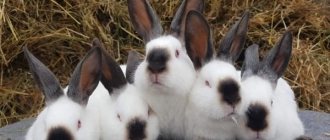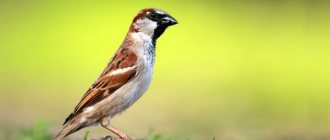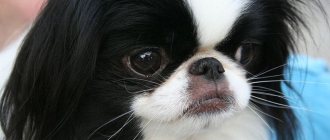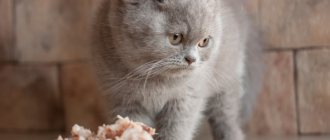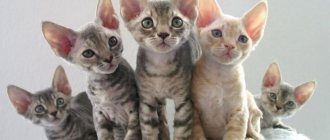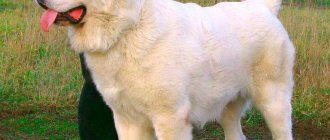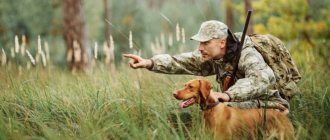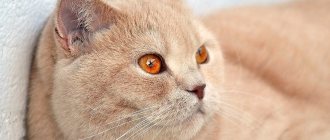Butterfly rabbits are in great demand among farmers. The main difference from other species is the unusual coat color. Thanks to this quality, butterflies attract so much interest. The breed is bred both for meat and valuable fur. These animals are easy to care for and do not require special conditions.
History of appearance
In the 19th century, the British developed a unique breed of rabbits called the Butterfly. This was the result of an interesting and unusual color, reminiscent in appearance of a butterfly with open wings. At that time, the weight of one animal was more than 3 kg.
Over time, breeders from different countries continued their work based on the dwarf Butterfly breed. Geneticists have carried out painstaking work to correct the decorativeness of the breed and increase the weight of the animals, while simultaneously improving the quality of the fur.
It was necessary to adapt the animals to living in more severe climatic conditions. For this purpose, crosses were carried out with rabbits of the Viennese Blue, White Giant, Soviet Chinchilla, etc. As a result, animals were obtained whose weight could reach 5 kg.
Butterflies gradually moved from the decorative category to the number of meat-hide breeds.
Growth dynamics
| Age of individual, months | Young animals | 1 | 2 | 3 | 4 | 5 | 6 | 7 | 8 | 9 |
| Weight in kg | 0.05 | 0.6 | 1.6 | 2.5 | 3.2 | 3.5 | 3.8 | 4.1 | 4.3 | 4.6 |
It is customary to slaughter rabbits when they reach 4-5 months of age. They do not have time to reach the maximum weight, however, in this age period there is the best relationship between the amount of meat and its taste.
Description and characteristics
Butterflies have characteristic external differences from representatives of other breeds of rabbits. If crossing with other animals occurs, the purity of the breed and the unique coloring of the skin are lost. That is why, in order to be confident in purchasing a Butterfly rabbit, it is worth knowing the main external characteristics and features of the animals.
Appearance
Spots are located symmetrically on the muzzle and on the sides of the body. In combination with the longitudinal jagged stripe located on the back, the effect of open butterfly wings is created. The nose also has a distinctive black pattern.
There are certain standard requirements relating directly to fur color and appearance, which indicate the breed of the animal:
- ears are dark;
- around the eyes the fur is dark in color, but the border should not match the pattern on the nose, cheeks or ears;
- the nose has a specific color;
- the head is small;
- paws are straight and strong;
- along the ridge there is a wide strip with protruding teeth;
- the paws and lower part of the tail are light;
- females have dark spots around the nipples.
Color
It is not necessary that the spots on the skin be black. They can also be blue or brown. The larger the animal, the less bright the boundaries of the spots are. Do not confuse butterflies with representatives of other breeds, which also have a spotted color.
Among butterflies, there may be animals with spots of several colors at the same time - brown, black and yellow. However, there are not too many of them.
Productivity
Rabbits of the described breed are sources of a large amount of dietary, tender and tasty meat. The weight of one animal can vary between 4-5.5 kg.
Females can give birth to 6-8 rabbits at a time. They have a well-developed maternal instinct, which is why almost all rabbits from the litter survive safely. Within a year, the female rabbit gives a good litter.
Butterflies can be bred not only to obtain a meat product, but also high-quality skins with interesting fur colors. Sometimes the spots are not only black, but also blue or yellow.
The video below provides an overview of the Butterfly rabbit breed:
Usage
Representatives of the described breed are widely used both for producing meat products and high-quality fur. Due to their unique and unusual color, the skins are used in their natural form for the manufacture of various fur products.
Read the article on how to properly tan a rabbit skin at home.
Most often, farmers breed animals of the described breed to produce tasty and dietary meat. An adult rabbit can weigh up to 5 kg. The price for representatives of the described breed is quite high. At one time, the female can bring 6-8 babies.
Signs of purebred breed
To be sure of the correct choice and purebred animal, you should pay attention to the following signs:
- colored spots do not merge with each other;
- claws are colorless;
- there is a dark border around the eyes, which should be separate from other spots on the muzzle;
- the head is small, in males it is more massive and larger, unlike females;
- ears are dark in color;
- there is a dark spot on the nose that resembles a butterfly;
- on the cheeks and on both sides of the body there are spots located symmetrically relative to each other;
- dark and fairly wide stripe on the back;
- large and massive paws, straight.
The skin should look like a canvas covered with a symmetrical and beautiful pattern - this is the first sign of the purebred of the breed. The fur is fluffy, thick, smooth and shiny.
Features of vaccination
Experienced rabbit breeders say that representatives of the butterfly breed are resistant to viruses and bacteria. But still, during outbreaks of diseases, their body cannot cope with the attacks of pathogens. Therefore, it is necessary to carry out routine vaccinations according to the established vaccination calendar.
A comprehensive vaccination is carried out for the breeding stock. Next, the livestock is vaccinated at six months of age. After this, re-vaccination is carried out every six months. With its help, you can protect your pets from outbreaks of dangerous diseases.
Advantages and disadvantages
Representatives of the described breed have a lot of positive qualities, thanks to which they are so popular:
- not too capricious in maintenance and care;
- quickly adapt to a new habitat;
- safely carry transportation over long distances;
- significantly less feed is required than in the case of keeping representatives of larger breeds;
- the wool has a clear and unusual pattern;
- no large cages are required to keep rabbits, as they are compact in size;
- Can be kept in an apartment as a pet.
The disadvantages of butterflies may include not very high productivity. Not all animals are heavy, and the skins are also small.
With a meager diet of females, they can eat their own offspring.
Varieties of Butterflies
Butterflies are among the large breeds of rabbits. However, the specific variety chosen by the farmer is important. For this purpose, it is worth first familiarizing yourself with the main features and characteristics of a particular subspecies.
Motley Giant
This species is the largest among all butterflies, so keeping it as a pet can cause many difficulties. However, the motley giant is ideal for breeding on large farms, since the animals provide sufficient quantities of both meat and fur.
Representatives of this subspecies have the following characteristics:
- the weight of the animals can vary between 5-9 kg;
- body about 60 cm long;
- the head is not large, round in males, slightly oblong in females;
- the chest is wide, females may have a dewlap;
- the body is slightly elongated, but dense and strong;
- the back has an arched shape;
- paws of medium length, strong and straight;
- The coat color is white with blue and black patterns.
Dwarf butterfly
These are the smallest representatives of butterflies and are the first ancestors of the described breed. Due to their compact size and calm nature, they are ideal for keeping at home. Has all the characteristics necessary for breeding.
The main parameters of the dwarf butterfly are:
- body weight about 3 kg;
- the body has a cylindrical shape;
- the head is large;
- the ears are located close to each other, stick out noticeably, the tips are rounded;
- On average, life expectancy is about 5-7 years.
Czech butterfly
No rabbit breeder can remain indifferent when he sees the golden fur of the Czech butterfly. The animals are not too large in size, so this species is ideal for large farms.
Representatives of this subspecies have the following characteristics:
- the weight of the animal can vary between 2-4.5 kg;
- strong and strong body, cylindrical in shape;
- there may be a slight dewlap;
- paws are straight, strong and strong;
- there are no spots on the chest and belly;
- the head has a slightly elongated shape;
- straight ears, not too long;
- equal coat, often with a slight sheen;
- the tail is small, white below.
Rhine rabbit
This subspecies of butterflies quickly gained popularity among rabbit breeders and is widely in demand in different countries. The main difference is considered to be a calm, kind and flexible disposition.
Representatives of the described subspecies may have the following characteristics:
- shades of fur can be black, white, golden-red;
- brown eyes;
- an adult can weigh more than 3 kg;
- females have more weight, unlike males;
- body of regular cylindrical shape;
- shoulders and hips have the same width;
- hind legs are strong, slightly rounded;
- The fur is pleasant to the touch, dense, reminiscent of delicate silk.
English butterfly
Representatives of this subspecies are very refined and sophisticated animals, incredibly smart. They have a cheerful and active character and need plenty of space to walk and play.
The main parameters of English butterflies are:
- the fur is well-groomed and beautiful;
- the head has a small and slightly oblong shape, a clear profile;
- straight ears, set close;
- the weight of the animal can vary between 1.5-4.5 kg;
- females are much larger than males and the difference can be 1 kg;
- elastic and elastic fur, pleasant to the touch;
- color can be of various shades - purple, gray, tortoiseshell, chocolate, blue or black;
- on the nose there is a dark spot, shaped like a butterfly with open wings;
- The average life expectancy is 9-13 years.
Appearance
Flandres rabbits are distinguished not only by their large weight. Let's look at the main characteristics of Flanders rabbits:
- Large erect ears (17-19 cm), resembling the letter “V”. Placed on a rather large head and short neck.
- The body is long, wide and especially well developed in the lateral part.
- Rabbits have strong bones and large, strong hind legs and short front legs.
- The tail is quite long, pressed to the body.
- The fur is high (3-4 cm), shiny and dense.
- One-year-old animals reach a weight of 8-10 kg. The lowest acceptable weight is 6 kg.
- The eyes and claws are dark brown.
- Rabbits are 68-73 cm long, sometimes up to 80 cm (measured from the nose to the base of the tail).
This is the Flanders breed standard. Currently, there are several colors: black, opal, silver, blue, red, light gray and white.
Maintenance and care
Keeping butterflies can be done in several ways - cage, semi-free, penned. The ideal option would be to live in cages. This method allows for complete control over the process of feeding and mating of rabbits, as well as calculating the gestation period of females.
Keeping them in cages allows you to regularly and without much difficulty carry out preventive work to combat various diseases. Helps prevent the massive spread of bacteria. Animals do not require too large territories; most importantly, drafts should not be allowed.
Content Features
Butterflies cannot be called picky, so even novice farmers who have not worked with rabbits before can keep them. In addition, they can become wonderful pets; all you need to do is purchase a small cage and nothing else is required.
Factory, in enclosures/pavilions
It is better to take a pavilion for keeping rabbits that is not too large. Animals feel quite comfortable under different conditions, especially if a not too large, but cozy and warm place where there are no drafts is equipped for them.
If you wish, you can build housing for your pets yourself. An excellent choice would be a pavilion, which consists of three floors. For manufacturing, use natural wood, slate, welded mesh, polycarbonate and sheet metal.
To properly build a cage, follow these tips:
- Build wooden doors into the queen cell, also make a wooden frame and partitions;
- use welded mesh for cage doors and rear floor equipment;
- slate will be an excellent option for the main floor; also use it for the ceiling of the lower cells;
- Insert doors using polycarbonate; animals can damage the beams, so cover them with sheet metal.
Do not forget that animals constantly need fresh air, so you can equip a pavilion or enclosure in the fresh air. This content will make the rabbits' fur thicker and denser.
The ideal option would be to adjust the content depending on the time of year:
- during warm periods, keep outside, but in a place where there are no drafts;
- in winter, move cages or enclosures indoors.
At home like a pet
When keeping animals as pets, it is better to use cages. To care for them, they need to be regularly ventilated, but avoid the formation of a draft. If possible, place the cage outside during the warm season, at least for a few hours. Such procedures will only benefit the animals - the fur becomes thicker, a beautiful shine appears, and appetite improves.
Make sure that butterflies have constant and free access to water and food. Don't forget to provide hard, fresh food so your rabbits can sharpen their teeth on it. If this is not done, they may begin to chew on the bars of the cage.
Feeding
Butterflies need a proper, and most importantly, varied diet. Meals must include:
- tree branches;
- in the summer - green grass, maybe a little withered;
- grain types of feed;
- in the cold season - fresh and fragrant hay;
- When fattening, it is recommended to use special concentrates;
- The diet must contain minerals and vitamin supplements.
Make sure there is always clean and fresh water in the cage. If you neglect this advice, the female may eat her offspring. If a female rabbit is very thirsty, she is able to completely forget about her own maternal instinct.
If you follow a few simple rules in nutrition, your pets will not only quickly gain weight, but also feel quite comfortable:
- When selecting products, make sure that the food is not spoiled, there are no signs of rot, and the expiration date of the food has not expired.
- Animals need to be fed at least twice a day, preferably at approximately the same time of year.
When and what to feed rabbits, read here.
- In the summer, green types of food must be present on the menu.
- Keep the cage perfectly clean - change the bedding at least once every 2-3 days, wash the feeders and drinkers every day.
- Make sure that it is dry and warm in the cage, since dampness and dirt are the main causes of death for animals.
If favorable conditions and comfort are created, pets can live up to 10 years.
Diseases and preventive measures
Representatives of the described breed suffer from such dangerous diseases as necrotizing hepatitis and myxomatosis. These viruses can instantly infect the entire herd, infecting both adults and young animals. There is a risk of death and destruction of the entire herd.
These troubles can be easily avoided if vaccination is carried out in a timely manner as a preventive measure. It is recommended to vaccinate baby rabbits immediately after weaning from their mother. In the first weeks after birth, young animals have the strongest immunity, which becomes possible thanks to breastfeeding. The protective property can last for 3 months.
It is recommended to vaccinate animals weighing at least 0.5 kg. The first vaccination is given at the age of 6 weeks, but 10 days before the procedure, it is necessary to check the young animals for the presence of worms. If necessary, mandatory deworming is carried out.
When rabbits reach the age of 1 year, a comprehensive vaccination is performed. If you plan to breed butterflies, it is worth considering that vaccination of females cannot be done during pregnancy and lactation. Vaccination is contraindicated for sick animals.
During vaccination, weakened pathogens of hemorrhagic disease and myxomatosis enter the animal’s body, provoking the onset of the production of its own antibodies against hostile cells. The body of sick rabbits and pregnant females is already subject to high stress, so it is necessary to choose a different time for vaccination.
Basic growing conditions
These pets are unpretentious to the growing requirements. Keeping rules are standard for all rabbits, regardless of breed. They need wide cage spaces, a balanced diet, cleanliness in the cage or enclosure. Representatives of this breed are well adapted to changes in climatic conditions. That is why many rabbit breeders set up spacious cages for their keeping right on the street.
Outdoor housing is a good alternative to shed housing, since in such conditions rabbits develop thicker and more beautiful fur, and this directly affects the quality of the fur and its cost. It is important to prevent pets from being in drafts and damp areas. Otherwise, the risk of developing viral or infectious diseases and diseases of the respiratory system increases.
Representatives of this breed are able to withstand air temperatures from +25 to -15, but only if they remain in such temperature conditions for several days. Sudden changes in climatic conditions are dangerous. Optimal temperatures are from 15 to 22 degrees above zero. It is important to control indoor air humidity. If the air is too dry or humid, this can lead to the development of various diseases in pets.
It is not recommended to make the bottom of the cage for representatives of this breed with bars. Otherwise, animals can injure their limbs, since the paws are not as developed as those of giants or other breeds. Be sure to add a layer of bedding to the bottom of the cage to ensure dryness and cleanliness. You can use hay, straw or sawdust as bedding.
Reproduction
If you plan to independently reproduce representatives of the described breed, you should familiarize yourself in advance with all the subtleties and features of this procedure. To understand that the female is ready for sexual activity, it is worth monitoring her behavior - she becomes active and restless, prepares bedding for herself and begins to scatter fluff throughout the cage.
Redness and swelling of the genital loop indicates that the rabbit is ready for mating. This condition lasts only a few days. For the first mating, choose an experienced male. If the female has experience, select a younger male for mating.
7 days after the first mating, a control test is carried out. If the female became pregnant the previous time, she will not allow the male to approach her. After 10-14 days, a final check is carried out to be sure that pregnancy has occurred - the rabbit’s belly is carefully palpated.
Optimal timing
Butterflies are ready to mate at 4 months. It is not recommended to carry out this procedure earlier, as there is a risk of causing great harm not only to the health of the future offspring, but also to the rabbit. Representatives of the species reproduce throughout the year, so there are no restrictions based on the time of year.
Mating throughout the year can be carried out only for completely healthy animals.
Experienced farmers recommend adhering to the following schedule when calving can be carried out:
- from January 15 to February 1 – in winter;
- from April 1 to April 15 – in spring;
- from June 1 to June 15 – in summer.
Males are recommended to be used for mating as often as possible. Too long breaks can have a negative impact on the health of the animals. It would be ideal to have a herd of 1 male and 8-9 females.
How is the birth going?
After mating, the female and male are seated in separate cages. A couple of days before the onset of labor, the mother rabbit begins to prepare, creating favorable conditions for the young rabbits. Forms a comfortable nest, which is covered from the inside with its own down.
Most often, labor occurs at night and can last approximately 15-65 minutes. After giving birth, it is necessary to carefully monitor the actions of the rabbit. It is important that there is always clean water in the cage. After giving birth, the female experiences extreme thirst.
Butterflies become caring mothers, but they can also abandon their offspring. If a female rabbit begins to scatter her babies around the cage and does not feed them milk, it is worth removing the offspring. You can place the baby rabbits in a cage with another female, who will begin to take care of them.
At one time, a female can bring about 8-10 rabbits. The offspring, reaching the age of one month, gradually begins to try the food given to the female. By 3 months of age they become fully sexually mature and ready for mating.
How is the birth going?
If a breeder has purchased purebred Butterfly rabbits, it is highly not recommended to breed them with other species. Yes, this can increase the weight of the resulting animals, but it also sometimes spoils their coat beyond recognition.
Birthing always takes place at night and lasts from 15 minutes to an hour.
During pregnancy (it lasts 30-32 days), the female is provided with increased nutrition. She also needs vitamins to keep her body in optimal condition. 9-12 days before birth, the cage is completely disinfected. About a week before giving birth, the female begins to build a nest by plucking the fur on her belly. If she does not do this, you need to arrange the nest yourself; for this, similar material is used.
Birthing always takes place at night and lasts from 15 minutes to an hour. The longer the labor, the less likely it is that all the offspring will be born alive. Therefore, breeders often help the female, but to do this they need to call a veterinarian. The presence of water in the cage during childbirth is mandatory, because the female experiences extreme thirst after giving birth.
Rabbits of the Butterfly breed usually give birth to 8 rabbits, and only with poor feeding or maintenance does the number decrease. The female rabbit carefully monitors the newborns, licks them, covers them with fur, and takes care of them, so there is no point in taking the babies away. She has enough milk; the breeder is only required to monitor the health of the young animals and their mother, as well as feed everyone on time (additional feeding if necessary).
Rabbits are born blind and bald, but they develop actively. On day 20, they can begin to be given regular food, but only in small quantities and only gradually, in order to understand the characteristics of each animal’s body for a particular product. From the 45th day they completely switch to the diet for adult animals. At 3 months they already reach sexual maturity.
Breeding
If you plan to breed representatives of the described breed, you should follow a few simple conditions:
- Build comfortable and fairly spacious enclosures. Animals can also be raised in small cages, open enclosures or on the balcony. For small rabbits, enclosures measuring 60 cm wide and 40 cm long are suitable. Do not forget to additionally insulate the floor of the cages so that the animals do not catch a cold, and equip a place where they can walk.
- Rapid weight gain. The maturation of representatives of the breed is accompanied by a rapid increase in weight. Already at the age of 4 months, rabbits weigh about 3-3.5 kg. Most of the weight is gained in the first six months.
- Rabbits that are pregnant must be kept separately. The female is placed in an empty cage until the offspring are born. It is important that its height is not lower than 45 cm.
- Be sure to get preventive vaccinations. Vaccination is performed at 6 weeks of age. Use only high-quality vaccines.
How to choose a good individual?
You should not pay attention to animals that have a high cost, since the price does not always indicate the quality of the animal. When choosing animals, you should pay attention to the following nuances:
- the fur is thick, silky to the touch, with a slight shine;
- if the animal is healthy, behaves actively, shows curiosity, constantly chews something and watches everything around;
- a sick animal is indifferent and quiet, can literally hide in a far corner and hide, its nose is hot to the touch, its eyes become cloudy;
- if the remains of droppings are noticeable on the fur and the animal tries to constantly scratch the anus area, it means there are worms;
- a healthy animal is well-fed, the skin is taut and does not loosen.
average cost
Taking into account the age of the animal, its cost also fluctuates. You should not purchase animals that are less than 1 month old, as there is a risk that they will become infected with enteritis. The cost of a month-old baby rabbit is about 350 rubles. Each rabbit that is 1 month older will cost approximately 350 rubles more. Consequently, an animal 4-5 months old costs more than 1,500 rubles.
Why is it worth breeding this breed?
The main advantage of the described species is that animals easily adapt to almost any climatic conditions. The butterfly can be bred in different regions of the country. Rodents can be kept not only in enclosures, but also at home. If you follow simple care rules, you can get tasty dietary and tender meat and valuable skin.
Disengagement zones
Rabbits of the Butterfly breed are in great demand in different countries, including France, Germany, Czechoslovakia, Russia, etc. Animals reproduce well and grow quickly in northern regions and mid-latitudes. The animals have thick fur, which perfectly protects them even in severe frosts.
Hygiene features
One of the prerequisites for the proper raising of rabbits is maintaining constant cleanliness in the cage premises. In this case, the risk of developing diseases in rabbits is significantly reduced.
To maintain cleanliness in the cage, it is necessary to clean out the manure daily, remove the layer of wet bedding, and add a layer of dry bedding. The drinking bowl and feeder should be washed daily. Once a week, the cage is thoroughly cleaned.
To prevent the development of infectious diseases, the cage, drinking bowl, feeder and other equipment are sanitized. Disinfection is carried out using lime, potassium permanganate or special preparations.
Important! During the period of disinfection, animals are transplanted into another cage.
It is very important to equip your pet's cage with the correct size. In this case, the rabbits will defecate in one place that will not come into contact with food and water. If the room is too small, there is an increased risk that water and food will come into contact with feces. This increases the risk of developing diseases of the digestive system and skin.
Reviews of the Butterfly rabbit breed
★★★★★
Valeria, 25 years old, housewife, Moscow. My son asked for a rabbit for a long time, we chose the Butterfly breed and are completely satisfied with it.
The animals are not too large, active, and enjoy playing with the child. They are not fussy about their diet and feel great in a small cage. In the summer we put the cage on the balcony. ★★★★★
Stepan, 30 years old, aspiring farmer, Voronezh. I recently decided to start breeding rabbits.
I chose Butterflies for this purpose - the animals are beautiful, the fur is smooth and thick. One female gives birth to 5-7 rabbits, they grow and gain weight quickly. They eat simple food and regularly give vitamin and mineral complexes. 5 rabbits easily get along in one cage; they behave calmly and do not fight. I am completely satisfied with the result, I will continue breeding. Hide
Add your review
Rabbits Butterflies are incredibly beautiful and sociable animals. Very active and inquisitive, they have the habit of constantly chewing something. They have a lot of advantages and positive qualities, thanks to which they are very popular among both experienced and beginning farmers. It is enough to create optimal conditions for keeping and take care of a balanced diet.
0
0
Copy link
Feeding
Butterfly rabbits will grow quickly if they are fed properly. A varied diet is needed:
- branches of fruit trees;
- grain feed;
- slightly dried green grass in the summer;
- in winter - fresh hay;
- during fattening, concentrates are advisable;
- fruits and vegetables;
- Vitamins and minerals should always be present;
- Pets are provided with plenty of fluids.
You need to feed 2 or 3 times a day.
